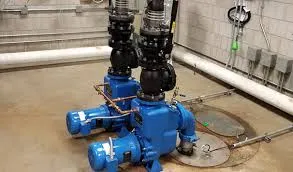Lao
- Afrikaans
- Albanian
- Amharic
- Arabic
- Armenian
- Azerbaijani
- Basque
- Belarusian
- Bengali
- Bosnian
- Bulgarian
- Catalan
- Cebuano
- Corsican
- Croatian
- Czech
- Danish
- Dutch
- English
- Esperanto
- Estonian
- Finnish
- French
- Frisian
- Galician
- Georgian
- German
- Greek
- Gujarati
- Haitian Creole
- hausa
- hawaiian
- Hebrew
- Hindi
- Miao
- Hungarian
- Icelandic
- igbo
- Indonesian
- irish
- Italian
- Japanese
- Javanese
- Kannada
- kazakh
- Khmer
- Rwandese
- Korean
- Kurdish
- Kyrgyz
- Lao
- Latin
- Latvian
- Lithuanian
- Luxembourgish
- Macedonian
- Malgashi
- Malay
- Malayalam
- Maltese
- Maori
- Marathi
- Mongolian
- Myanmar
- Nepali
- Norwegian
- Norwegian
- Occitan
- Pashto
- Persian
- Polish
- Portuguese
- Punjabi
- Romanian
- Russian
- Samoan
- Scottish Gaelic
- Serbian
- Sesotho
- Shona
- Sindhi
- Sinhala
- Slovak
- Slovenian
- Somali
- Spanish
- Sundanese
- Swahili
- Swedish
- Tagalog
- Tajik
- Tamil
- Tatar
- Telugu
- Thai
- Turkish
- Turkmen
- Ukrainian
- Urdu
- Uighur
- Uzbek
- Vietnamese
- Welsh
- Bantu
- Yiddish
- Yoruba
- Zulu
Telephone: +86 13120555503
Email: frank@cypump.com
ຕ.ລ. . 21, 2024 22:11 Back to list
centrifugal pump for slurry
Understanding Centrifugal Pumps for Slurry Applications
Centrifugal pumps are widely recognized for their efficiency and versatility in various industries. When it comes to handling slurry — a mixture of solids and liquids — the selection of the appropriate pump becomes critical. Slurry applications, found in sectors such as mining, construction, and wastewater treatment, present unique challenges due to the abrasive, viscous, and sometimes corrosive nature of the materials involved.
What is a Slurry?
Before delving into the specifics of centrifugal pumps for slurry applications, it’s essential to understand what constitutes a slurry. A slurry is a heterogeneous mixture that typically consists of a solid phase suspended in a liquid phase. The concentration of solids in the slurry can significantly affect the pump's performance, making the choice of pump crucial for efficient operation.
The Role of Centrifugal Pumps
Centrifugal pumps operate on the principle of converting rotational energy, typically from a motor, into hydrodynamic energy. They utilize a rotating impeller to impart velocity to the fluid, which is then converted into pressure. While standard centrifugal pumps are often effective for clear liquids, their applications in slurry handling require specific design adaptations to manage the associated challenges.
Key Considerations for Slurry Pumping
centrifugal pump for slurry

1. Impeller Design The impeller’s design is critical when working with slurry. Pumps designed for slurry typically feature larger, more robust impellers that can handle solid particles without clogging or excessive wear. Open impeller designs are often favored, as they allow for the passage of larger solids.
2. Material Selection The materials used in the construction of slurry pumps must withstand abrasive conditions. High-chrome iron, rubber, and other wear-resistant materials are commonly used to extend the life of the pump components and minimize maintenance costs.
3. Pump Size and Configuration The size of the pump and the configuration of the piping system can significantly influence performance. Adequate sizing is essential to ensure that the pump can handle the flow rates and solid concentrations without causing excessive pressure drops or blockages.
4. Efficiency While centrifugal pumps are known for their efficiency, this can vary when pumping slurry. The efficiency of a centrifugal pump decreases as the solid concentration increases. Therefore, selecting the right pump model for the specific slurry type and application is crucial for optimal performance.
5. Maintenance and Reliability Given the harsh conditions involved in pumping slurry, routine maintenance is vital. Choosing pumps with easy access to wear parts, as well as those designed with reliability in mind, can save time and costs associated with unexpected breakdowns.
Conclusion
In conclusion, centrifugal pumps are essential for the effective handling of slurry in various industrial applications. Their ability to manage complex mixtures relies heavily on specialized design features that address the unique challenges of slurry handling. By considering factors such as impeller design, material selection, pump size, efficiency, and maintenance, industries can ensure the longevity and reliability of their pumping systems. Properly chosen and maintained, centrifugal pumps for slurry applications can significantly enhance productivity and reduce operational costs.
-
AI-Optimized Pipeline Pumps | Boost Efficiency
NewsAug.05,2025
-
Reliable Non-Clog Sewage Pumps with GPT-4-Turbo Tech
NewsAug.04,2025
-
High-Performance Air Pumps for Sand & Gravel | Efficient Transport
NewsAug.03,2025
-
ISG Series Vertical Pipeline Pump - Chi Yuan Pumps Co., LTD.|Energy Efficiency, Corrosion Resistance
NewsAug.03,2025
-
ISG Series Pipeline Pump - Chi Yuan Pumps | Energy Efficiency&Compact Design
NewsAug.03,2025
-
ISG Series Vertical Pipeline Pump - Chi Yuan Pumps Co., LTD.|High Efficiency, Low Noise, Durable
NewsAug.02,2025










